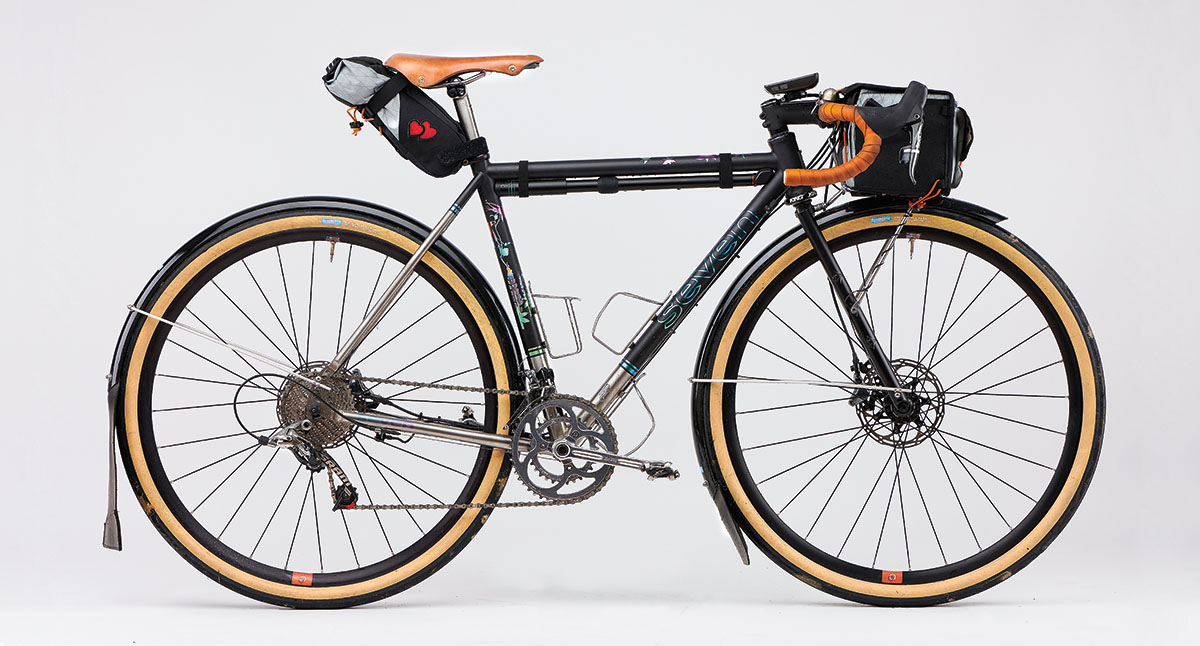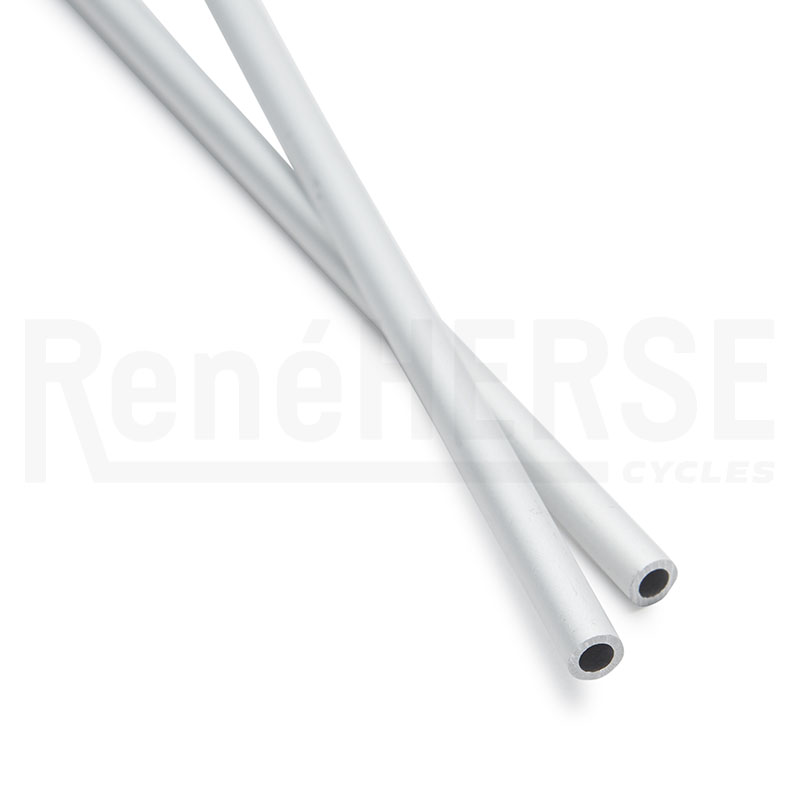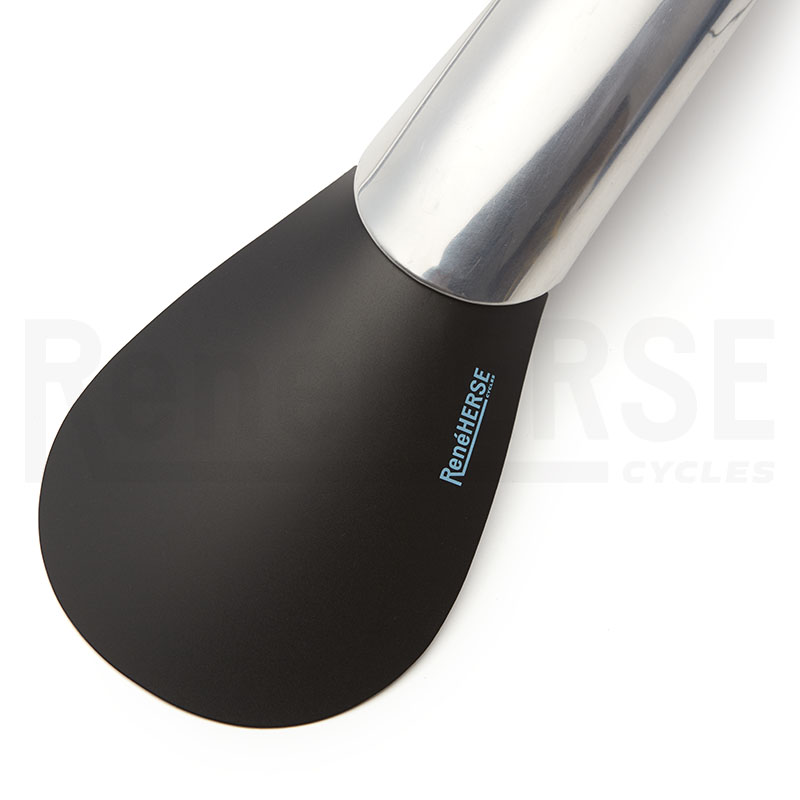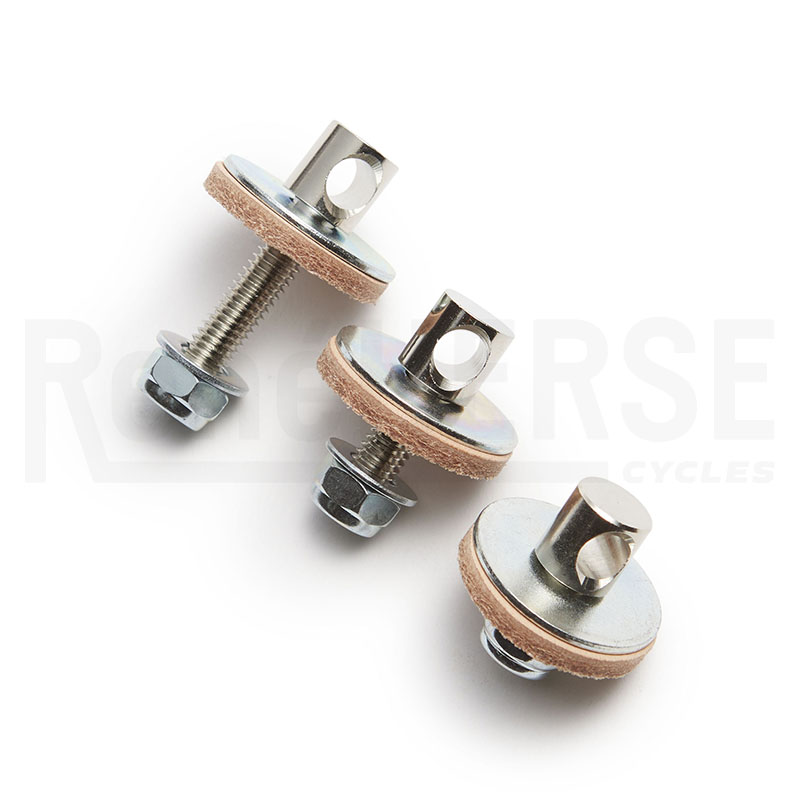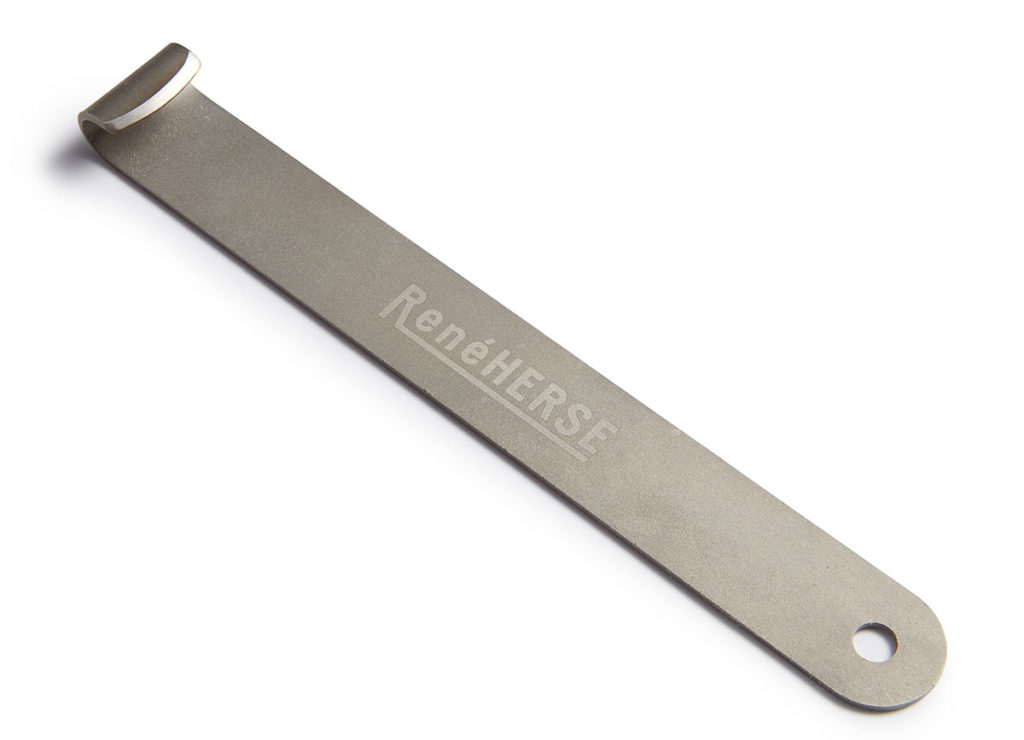Fenders to Keep You Really Dry
Fender can seem unglamorous compared to electronic derailleurs or one-piece carbon cockpits. Yet fenders actually make a bigger difference in how much we enjoy our bikes, especially during the rainy season. Even when it’s dry outside, the forecast may predict a “30% chance of rain.” With fenders, we head out anyhow, confident that even if those 30% become 100%, we’ll still enjoy our ride.
Except that fenders are not all alike. Sadly, most fenders don’t provide enough coverage to keep your feet and your bike’s drivetrain dry. Many fenders have brackets riveted on the inside, which act like dams that divert water onto the stays, from where it drips onto your feet. And too many fenders rattle and resonate when you ride over rough roads. These may seem like small things, but they make a real difference when you ride in the rain. In our experience, mediocre fenders offer about half as much protection as excellent ones. Why settle for ‘halfway fenders’?
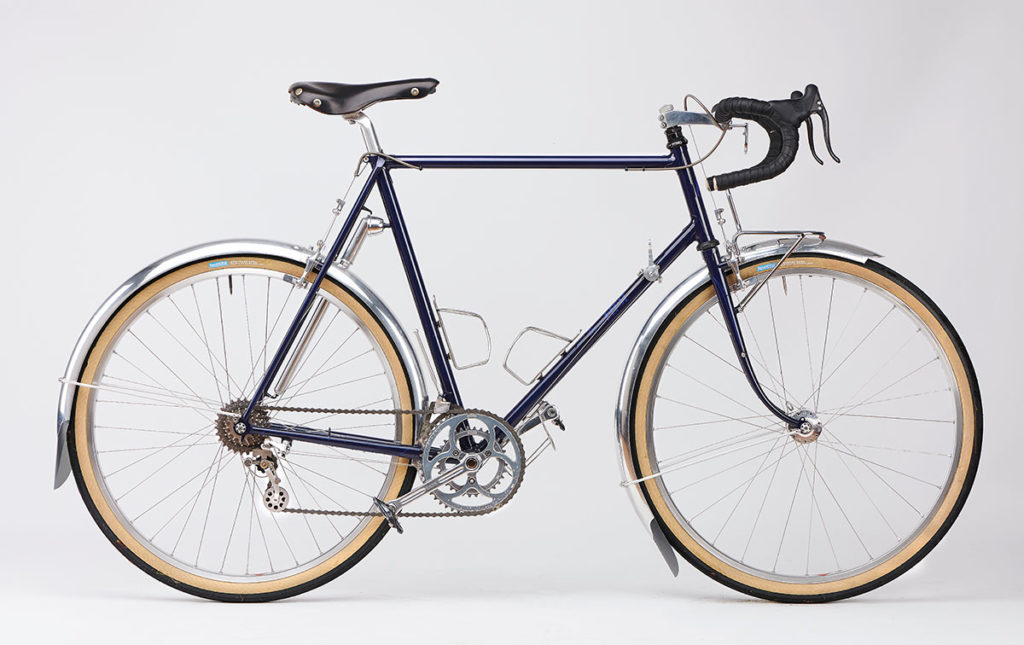
Excellent fenders start with sufficient coverage. Rene Herse fender blades are longer than others, especially at the front. That way, the fenders cover more of the wheels and keep spray off your feet—and off your bike’s drivetrain. No more squeaking chains at the end of a long ride in the rain! (Our fender blades are made to our specifications by Honjo in Japan—they are different from their stock models in many ways. How much coverage they offer is one of them.)
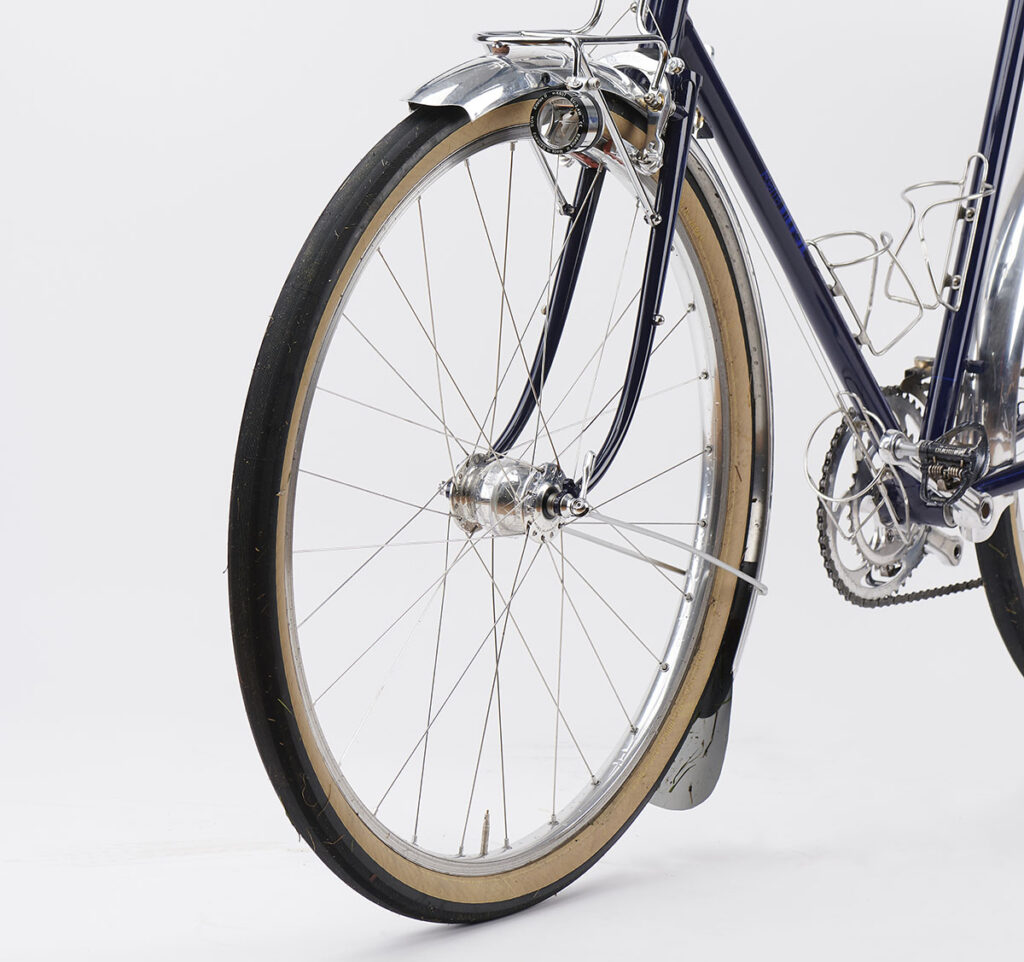
Excellent fenders should have an uninterrupted interior and rolled edges, so the water stays inside the fender. You don’t want your fenders to first collect the water and then drip it onto your feet!
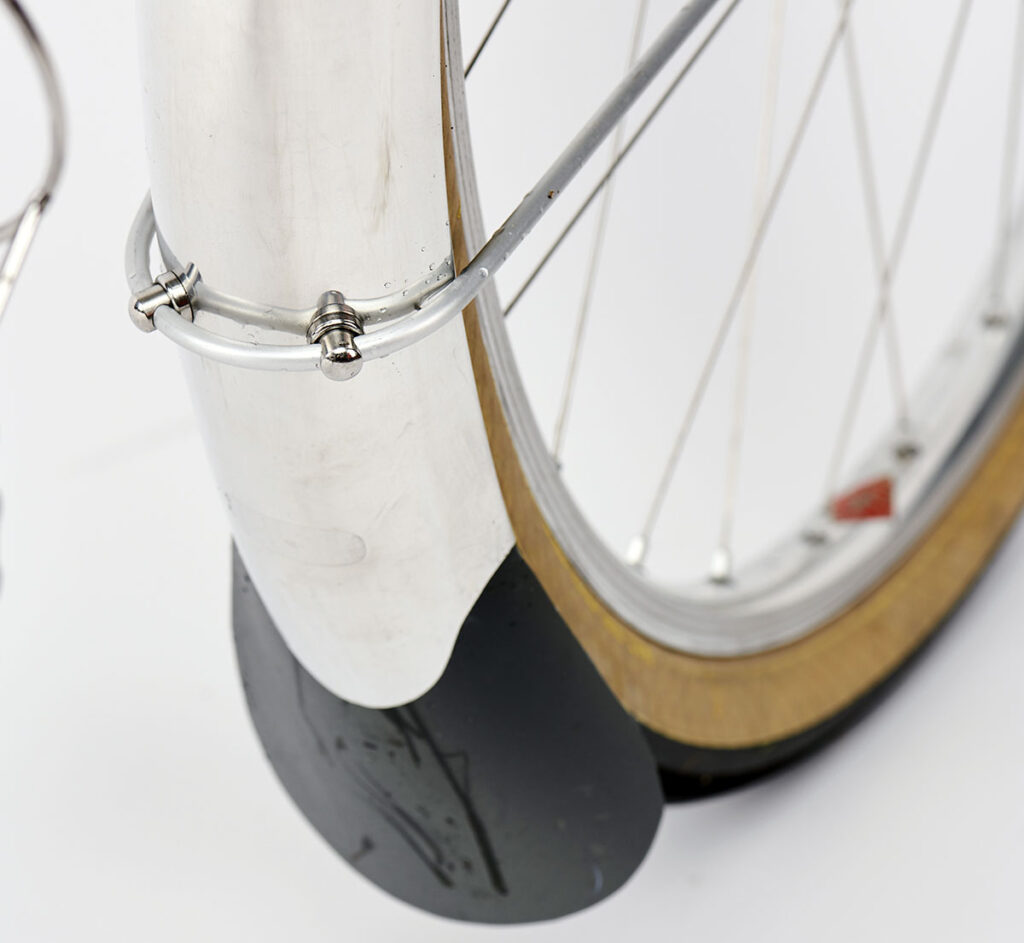
Excellent fenders also need to be stiff and have strong stays, so they don’t resonate when you ride on rough pavement. A stiff fender is a safety feature, too. If your fender collapses because your tire has picked up a rock or stick, it can lock the front wheel. That’s where aluminum fenders have a big advantage over plastic ones. Mounting the stays directly to the fender, rather than to a flexible bracket, adds significant stiffness.
The aluminum stays and lack of brackets are also the reason why our fenders are among the lightest anywhere. Our lightest model weighs just 353 g—including stays and all the hardware you need to attach them. That’s 30% less than plastic fenders. Even most carbon fenders aren’t significantly lighter—because the weight is in the hardware and not the aluminum blades.
If you are really concerned about weight, we offer our fenders with optional tubular stays. That is probably the easiest way to save 35 g on your bike without compromising performance or durability.
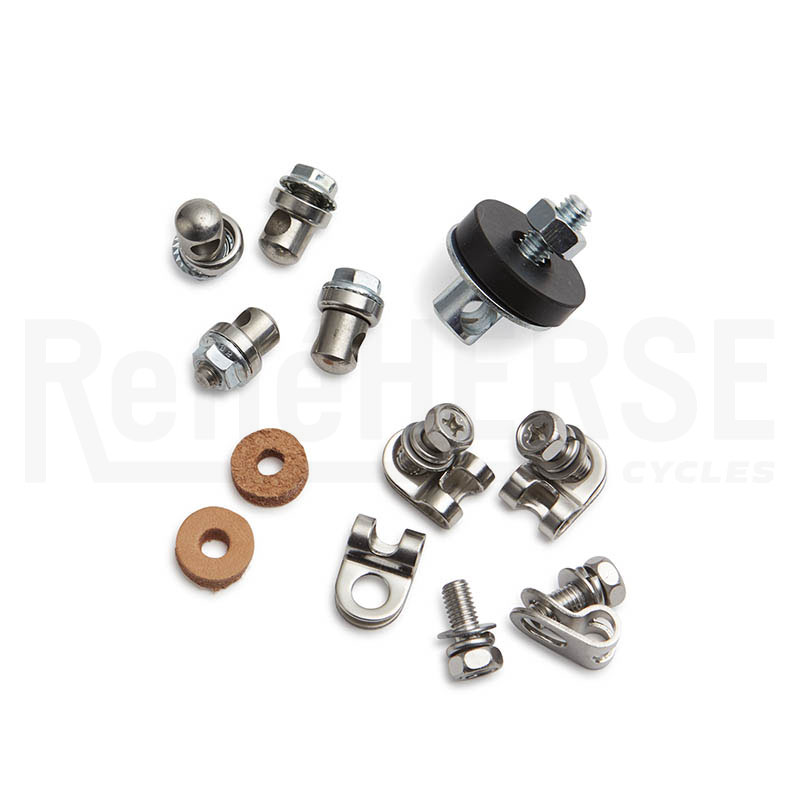
Much of the hardware on our fenders is custom-made, because we want it to be perfect. Our leather washers keep the fenders from rattling and resonating. We use the best leather, so these washers last for many decades. (Why not rubber or plastic? Those materials inevitably crack after just a few years when they are in such a highly-stressed location.)
We make our own eyebolts for the stays. They are sized so the bolts don’t protrude into the fender more than absolutely necessary. We shaped the heads like those on classic Rene Herse bikes to make them more beautiful. And we use expensive serrated nuts that lock onto the fender surface—much more secure than nuts with Nyloc inserts—because you shouldn’t have to tighten your fender bolts. Ever.
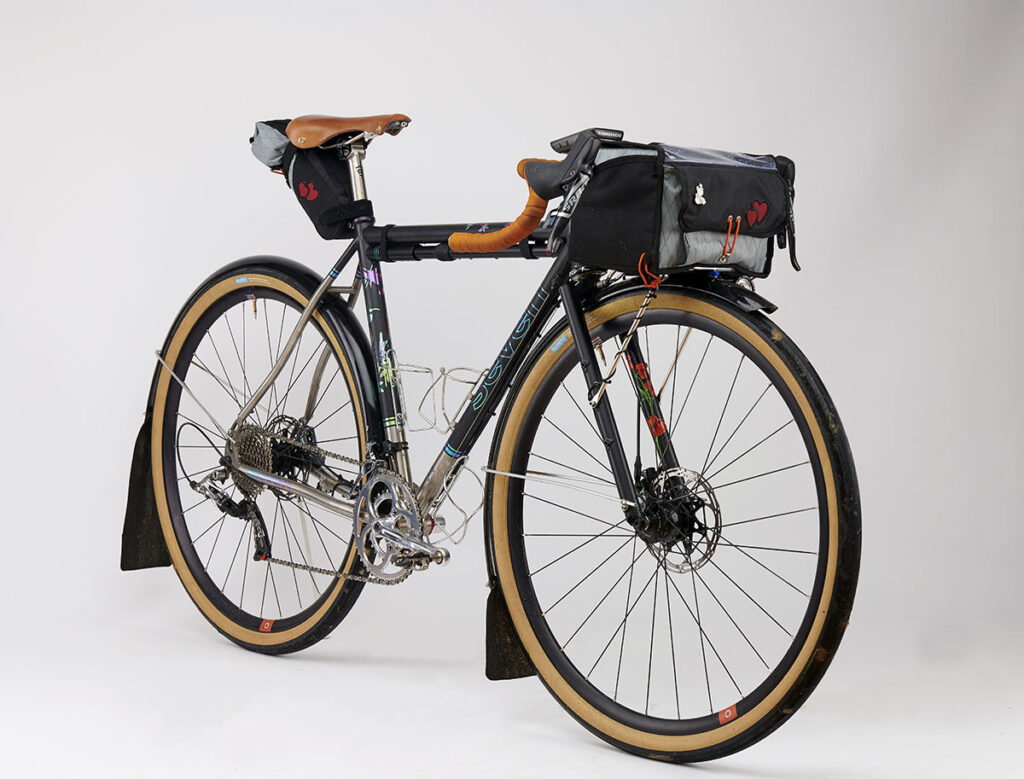
Great fenders should make your bike more beautiful, not less. And great fenders should improve the performance of you bike, not detract from it. A mainstream cycling magazine once called us ‘fender snobs.’ We were amused, and maybe a little proud. Because it’s true that we have been thinking about fenders more than just about anybody else. Riding long distances year-round in the Pacific Northwest will do that to you. We don’t like to suffer—we want to enjoy every ride!
How much of a difference do great fenders make? Are we just talking about marginal gains here, the sort of thing you can measure in the lab, but rarely notice on the road? Not at all. The difference is very noticeable as soon as the roads are wet. With great fenders, you realize that relatively little water is falling from the sky, compared to how much spray your tires kick up. Imagine standing in the rain, and somebody starts spraying you with a water hose. Get rid of the spray, and you’ve solved 90% of the problem.
In the video above, I’m riding through a typhoon in Japan. That’s pretty extreme, as far as rain goes. There’s standing water on the road, but I’m comfortable and my feet are dry, even without shoe covers. (My shoes got wet on the outside from the rain that was falling from the sky, but my body heat kept that moisture from getting inside.)
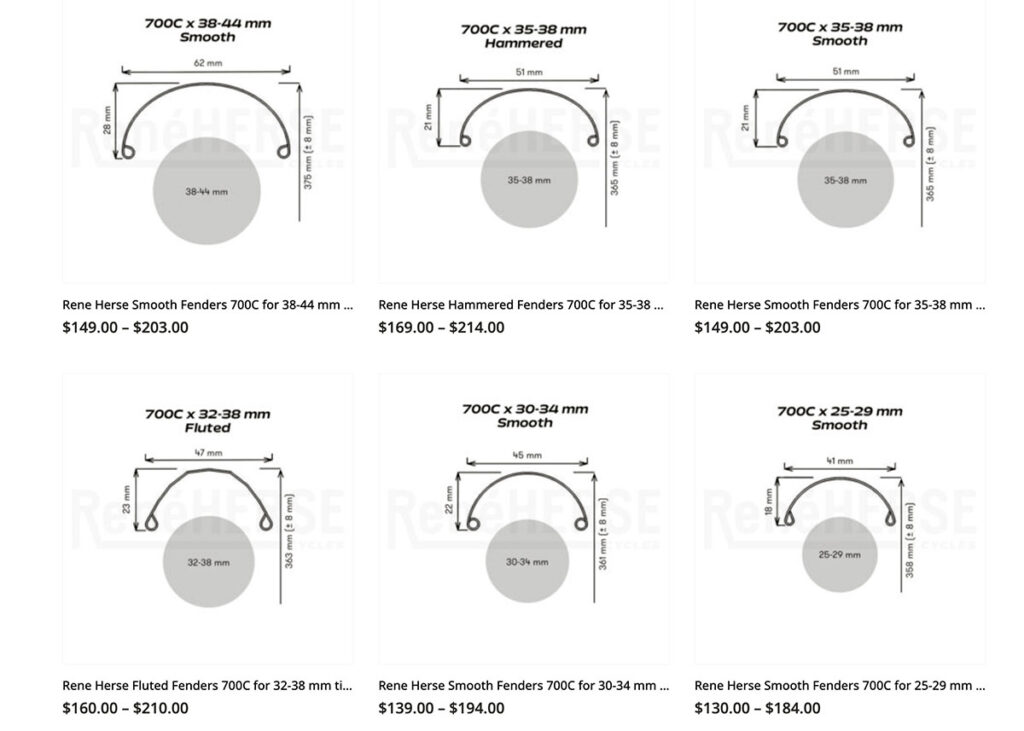
In the Rene Herse program, you find many different fender models, designed to fit most tire sizes. We’ve recently updated our website, so you can see the actual dimensions of each fender, and how it fits around your tires. The drawings are accurate and to scale, making it easy to compare different fenders.
If you look carefully, you’ll notice that the radius of our fenders varies depending on the width of the tire, not just the wheel size. Most makers use one radius for all 700C fenders, one radius for all 650B fenders, etc. You’ll notice the difference when you install your Rene Herse fenders: They fit ‘just right.’
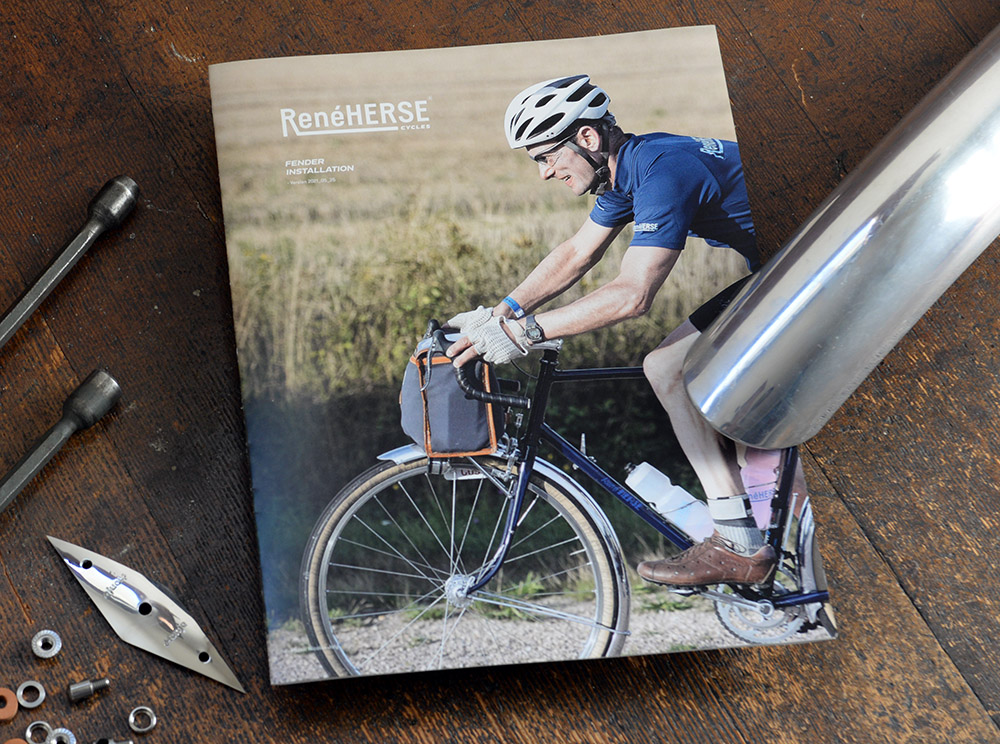
Speaking of installation, our fenders come with illustrated step-by-step instructions. We explain the basics, but also things like how to fine-tune the fender radius so the fenders fit perfectly. And we show you how to install your fenders without inbuilt stresses that would cause them to fail prematurely. Well-mounted Rene Herse fenders last as long as your bike. (I have more than 70,000 miles/100,000 km on my oldest set.) We also have an online guide that helps with figuring out which fenders are best for your bike.
Our commitment to making the best fenders doesn’t stop with the fenders themselves. We’ve also spent years perfecting mudflaps. Why are mudflaps so important? Without a mudflap, the water that runs down the fender gets incorporated into the spray from the front wheel, and your feet actually get wetter than they would without fenders. A mudflap ensures that all that water is released so far down that it just falls back onto the road surface without reaching your feet or your bike’s drivetrain. The last part is important, too: Even during the rainy season, I don’t have to lubricate my chain after the first installation. And there’s none of the grittiness that wears out your expensive chainrings, cogs and derailleur.
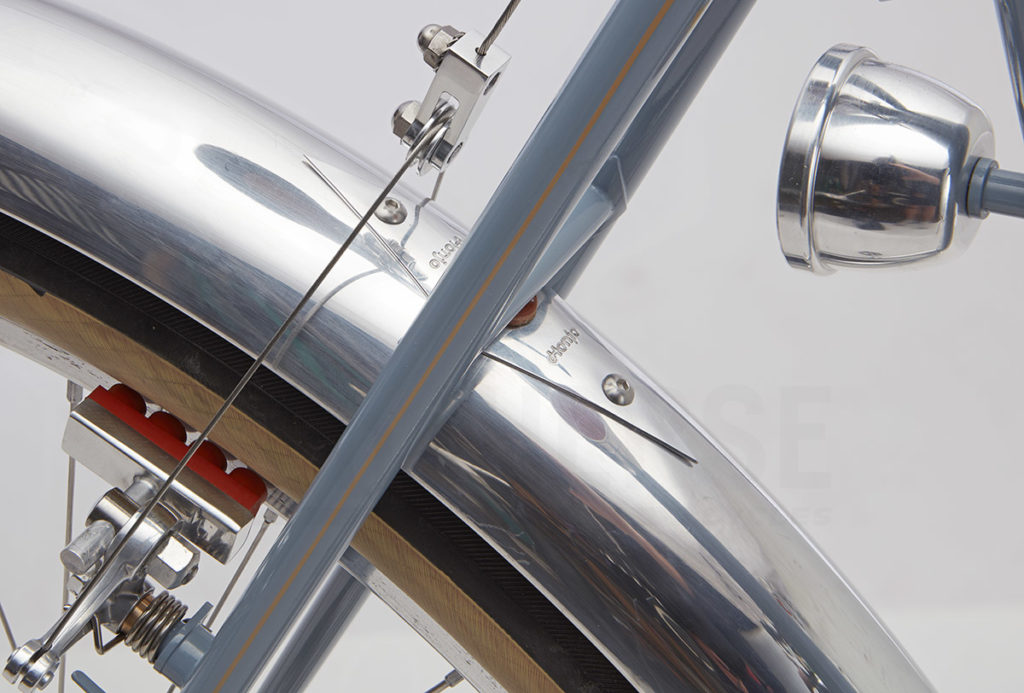
Small things include the rear fender reinforcement. René Herse developed this part many years ago. The story goes that Lyli Herse and Robert Prestat crashed their tandem descending a steep hairpin during the 1951 Poly de Chanteloup hillclimb race. Their rear fender broke in the crash, and the penalty for this ‘equipment malfunction’ cost them the victory in this prestigious event. Lyli told me: “The next day, my father went to his workshop and developed the fender reinforcement.”
From then on, most Rene Herse bikes were equipped with this neat part that takes the load off the most highly-stressed part of the fender. Now made by Honjo, it’s a good idea for bikes that see a lot of rough gravel riding.
The Rene Herse fender program includes many useful small parts. We offer the Daruma eyebolts that attach the fender inside the fork crown in three lengths. The middle one is standard. The short one is useful for some road bikes. The extra-long Daruma is essential for bikes that have a taller-than-usual fork crown. You can cut a bolt shorter, but you can’t easily make it longer!
All these parts are also available separately. We also offer individual fender stays and fender blades, because we know that accidents happen. Rather than having to buy a complete fender set, you can just get the stays or the blades separately.
We’ve developed a custom tool for indenting the fender at the fork crown for a perfect installation. Another tool (above) opens the fender edge—useful if you want to run lighting wires through your fenders.
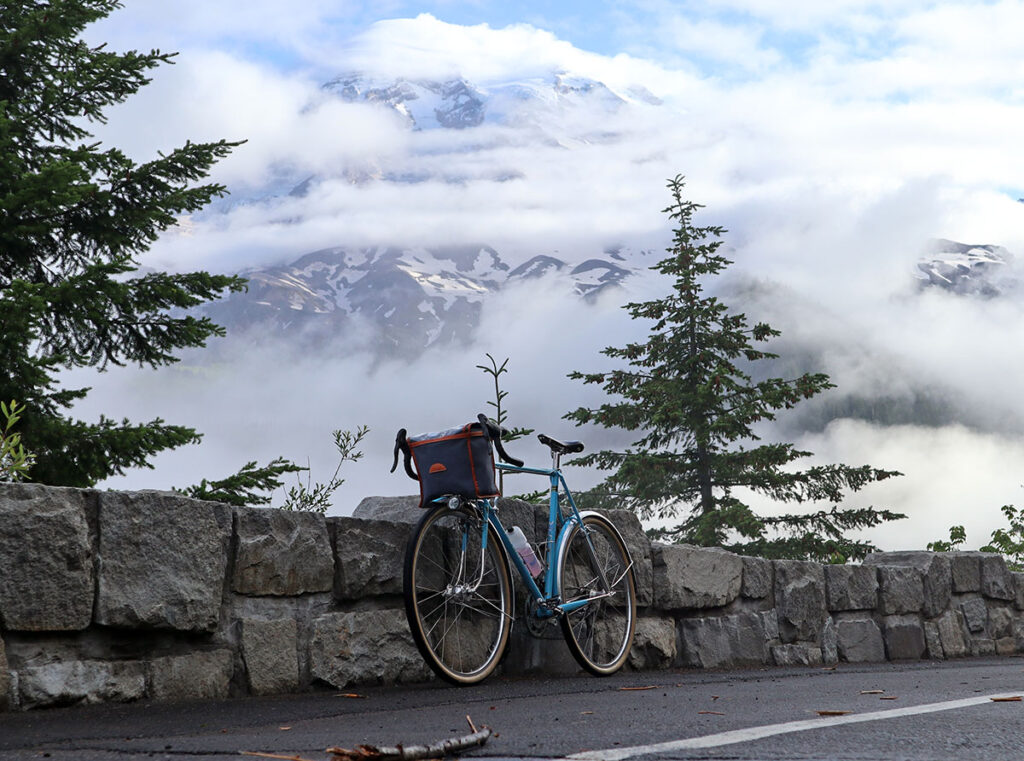
We may not be ‘fender snobs,’ but we do take fenders seriously. The reason is simple: We’ve developed these fenders and parts for our own bikes and our own rides. That’s why we care so much about fenders, and why we make so many small parts that will never turn a profit.
Some of our most memorable—and enjoyable—rides were in the rain. Until the sun burst through the clouds, and we were glad to be outside and not on a trainer in the basement.
More information:
- How to figure out whether your bike can be equipped with Rene Herse fenders.
- Fenders in the Rene Herse program
- Our fender instructions were also published as a ‘Project’ article in Bicycle Quarterly 76, in case you need just the instructions.
- For a detailed how-to article on how to reshape fender ends, how to make your own mudflaps, and how to install rear fender reinforcements, see Bicycle Quarterly 77.


